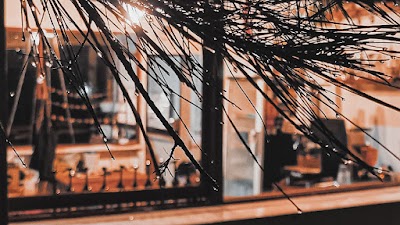Malinau Cultural House (Rumah Budaya Malinau)
Overview
The Malinau Cultural House, nestled in the heart of Kalimantan Utara, Indonesia, is a magnificent tribute to the region's rich and diverse cultural heritage. This architectural marvel symbolizes the unity and identity of the Malinau people and their neighbors. Its construction was not a hasty endeavor; it required meticulous planning, traditional craftsmanship, and a strong sense of community cooperation.
The inception of the Malinau Cultural House stemmed from a desire to create a space dedicated to preserving and celebrating the traditions of the Dayak people, the indigenous inhabitants of Kalimantan. Local leaders and cultural advocates convened to bring this vision to life, aiming to design a structure that would embody the spirit of the land and its people.
Constructed primarily of wood, the Cultural House is truly an impressive sight. The choice of timber was both aesthetic and practical, as the dense forests of Kalimantan offer a rich supply of high-quality wood. Local carpenters and craftsmen played an integral role in the construction, ensuring that traditional building techniques were honored. This involvement not only maintained the authenticity of the structure but also showcased local skills.
One of the most captivating aspects of the Malinau Cultural House is its intricate carvings. These detailed artworks depict various elements of Dayak mythology, history, and daily life. Artisans dedicated months to crafting these carvings, often working tirelessly from dawn to dusk. Each carving serves as a narrative, preserving the oral traditions of the community in a visually stunning format.
The roof of the Cultural House is another architectural highlight. Shaped like a traditional longhouse, a hallmark of Dayak design, the steep, sloping roof is made from thatch and bamboo—materials that have been utilized in the region for centuries. This design not only harmonizes with the environment but also provides essential ventilation and protection against the heavy tropical rains.
Inside, visitors are welcomed into a spacious open hall, which serves as the venue for various cultural events, including traditional dance performances, music festivals, and community gatherings. The layout reflects the communal lifestyle of the Dayak people, emphasizing large, open spaces that encourage social interaction and collective activities.
In addition to the main hall, the Cultural House features a smaller room dedicated to showcasing artifacts and memorabilia. This mini-museum displays traditional costumes, musical instruments, hunting tools, and other items that offer valuable insights into the Dayak way of life. Each artifact is accompanied by informative plaques, making it an educational experience for both locals and visitors.
The construction of the Malinau Cultural House was not merely about erecting a physical structure; it was a journey that fostered a sense of pride and unity among the community. Residents participated in every phase of the project, from planning to execution. This collective effort not only ensured the successful completion of the Cultural House but also strengthened the bonds within the community.
The grand inauguration of the Malinau Cultural House was a momentous occasion, celebrated with traditional rituals to bless the building. The event featured vibrant dance performances, music, and feasting, marking a day of immense pride for the people of Kalimantan Utara.
Today, the Malinau Cultural House stands as a beacon of cultural preservation, attracting visitors from around the globe eager to learn about the rich traditions of the Dayak people. It serves as a valuable resource for school groups, researchers, and tourists alike, playing a crucial role in educating younger generations about their heritage and ensuring that the stories and traditions of their ancestors remain alive.
In summary, the Malinau Cultural House in Kalimantan Utara, Indonesia, is a beautifully crafted structure that serves as a cultural hub for the Dayak people. Through traditional building techniques, community involvement, and a commitment to preserving heritage, it has become much more than just a building; it is a living testament to the enduring spirit of Dayak culture.




